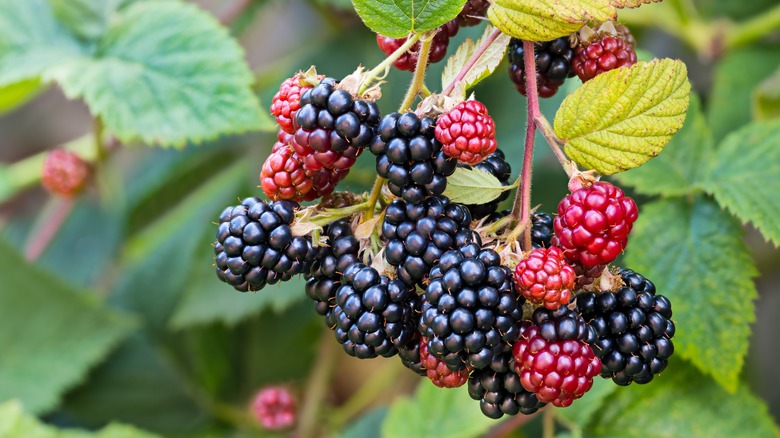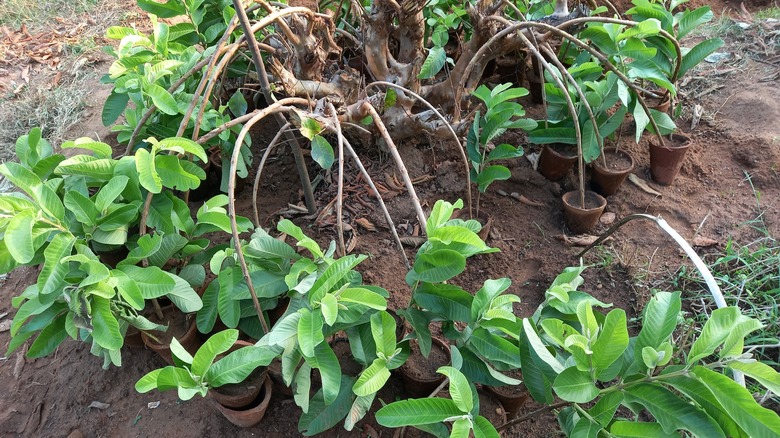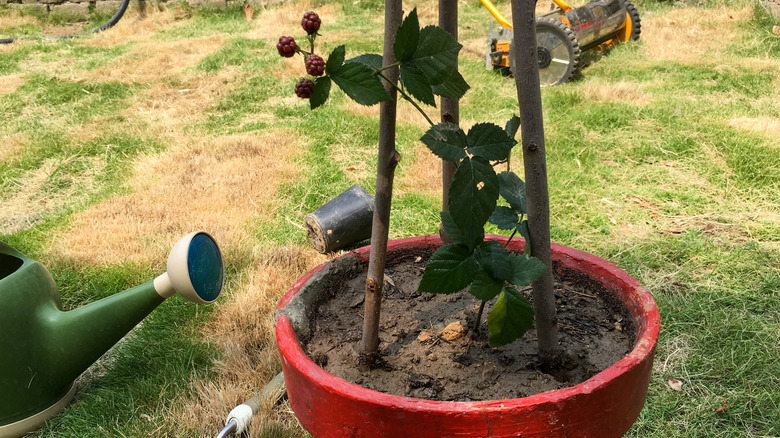The Unique Process You Need To Follow To Propagate Blackberries, According To HGTV
Blackberries are a delicious summer fruit that can be used in everything from jams and jellies to pies and cobblers. And, if you live in USDA growing zones 4 to 10, it's easy to grow your own blackberries, even if you're relatively new to gardening. One thing that makes blackberries so easy is that they're prolific. They'll naturally try to spread and propagate on their own. But if you give them a little help with a propagation process called layering, you'll have your hands full with baby blackberry plants. You can replant these elsewhere to grow your blackberry collection and boost next year's harvest, gift them to your fruit-loving friends, or sell them to make some extra cash.
You may be familiar with propagating by cutting, which involves cutting away a leaf, root, or stem section and using it to grow a new plant or "clone." This method is commonly used to propagate succulents, orchids, herbs, and many other plant species. Blackberries, however, are best propagated by layering — which is similar to cutting, but the timeline is a little different. In the layering process, the clone plant grows while still attached to the parent plant and then is cut away after it develops roots. It's a simple but effective process to multiply your blackberry plants.
Propagation by layering
There are three ways to propagate by layering: simple layering, tip layering, and air layering. The most common method, simple layering, is ideal for plants that form low branches or vines. A branch that's already close to the ground is scraped to form a wound, which will eventually grow roots. The wounded area, while still attached to the parent plant, is buried in the ground with the tip of the branch protruding.
Tip layering is similar, except there's no need to create a wound in the plant, and the tip of the branch is also buried. In plant species that can be propagated by tip layering, the tip will naturally grow roots when put in the soil. Blackberries are ideal to propagate by tip layering because they form long branches, or canes, that will eventually grow heavy enough to lean over and touch the ground. The cane tips will often grow roots naturally as the plant attempts to spread.
But if you want to quickly multiply your blackberry plants, you can speed this process along by pulling the tip of one cane down to the ground and covering it in soil. Over the next few weeks, it will develop its own root system, and you can cut the new plant away from the parent plant.
How to tip layer blackberries
This propagation method works best in spring and summer when your blackberry plant is in active growth. Choose one or more healthy canes that are either near the ground or already touching the ground. Leaving the cane connected to the main plant, pull it gently down to ground level and cover it with soil. You can use potting soil or soil from the ground as long as it's good quality and nutrient-rich. To prevent the cane from accidentally coming out of its new home, it may help to dig a small hole or trench in which to bury the tip. Or, if you ultimately want your new blackberry plant to live in a pot, you can bury the tip directly in a pot of soil.
Once the tip is buried, keep a close eye on it. Water it frequently to encourage root growth, and make sure no squirrels or dogs are trying to dig it up. After a short time (typically two to three weeks), you should start to see roots and new growth forming. At this point, you can use a clean, sharp blade to sever the new plant from the parent plant. It's a good idea to leave the new plant in the ground for about a year to let it become established before you transplant it to a new location. Then you can care for it as you would any other blackberry plant.


